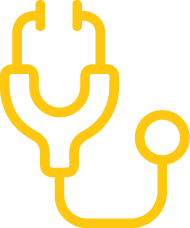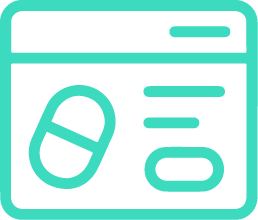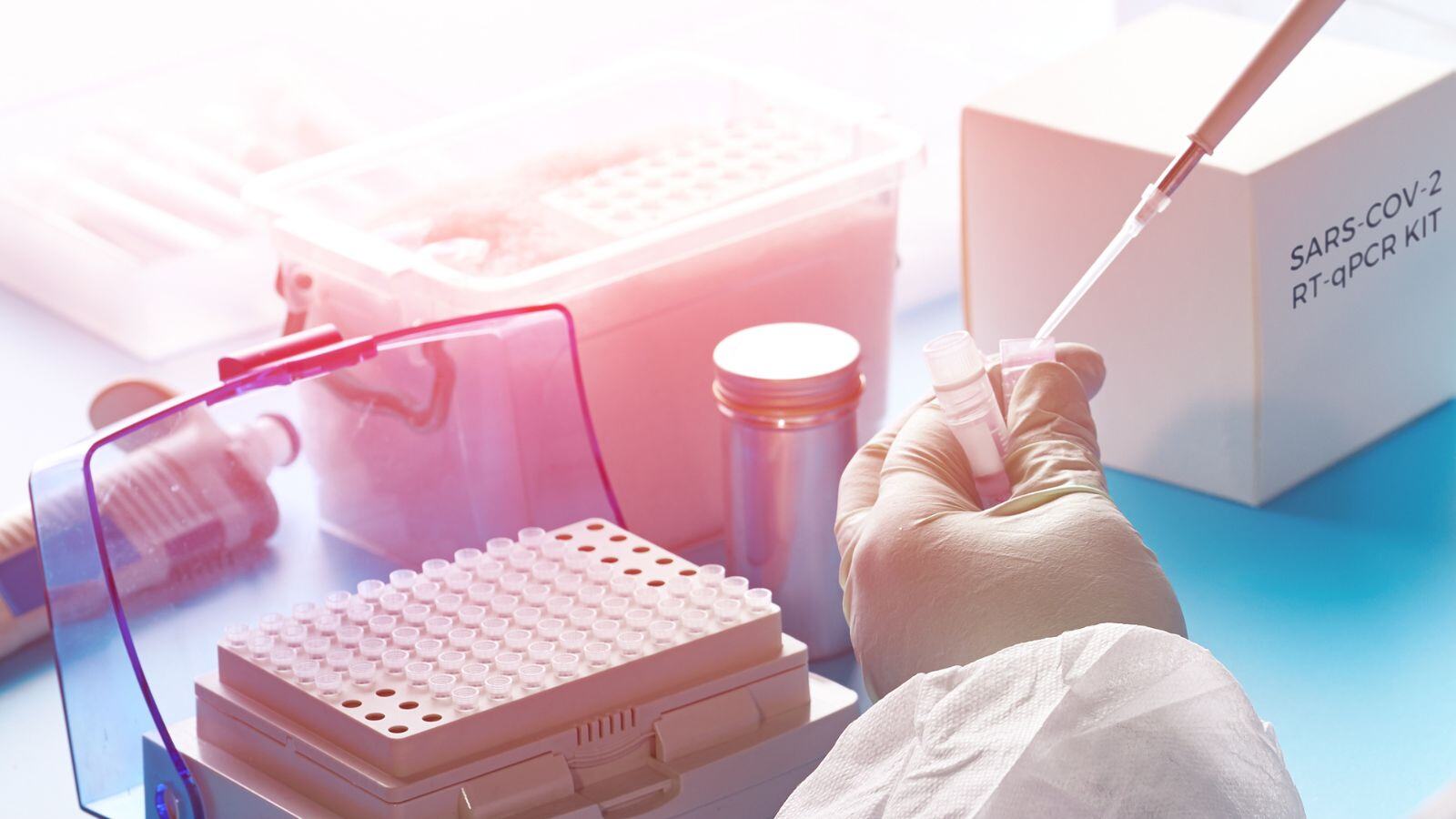Digital technology is transforming the way clinical trials are conducted, offering new opportunities to improve patient experience, data quality, and trial efficiency.
In recent years, technological advancements such as wearables, mobile apps, and virtual platforms have revolutionized the way clinical trials are conducted, opening up new possibilities for remote patient monitoring, real-time data analysis, and patient engagement.
Curious about the potential of digital health for clinical trials? In this article, we will explore:
- the current state of digital health in the clinical industry
- key digital health technologies in clinical trials (AI, ML and blockchain)
- several use cases in which these technologies (can) take up center stage
- the benefits and challenges of implementing digital solutions in the complex and highly regulated field of clinical research
The state of digital health in the clinical industry
The interest in machine learning for healthcare has grown rapidly over the past 10 years.
A first look at Figure 1 below (from E. Hope Weissler et al.) seems to show that ML and AI have a strong presence in the clinical setting in terms of the number of publications.
Figure 1 – The number of clinical practice–related publications was determined by searching “(“machine learning” or “artificial intelligence”) and (“healthcare”).” The number of healthcare-related publications was determined by searching “(“machine learning” or “artificial intelligence”) and (“healthcare”)”, and the number of clinical research–related publications was determined by searching “(“machine learning” or “artificial intelligence”) and (“clinical research”).”
However, a closer look reveals that it is actually the clinical and healthcare practice branches that are reporting the use of ML/AI, rather than the clinical research branch. While other industries are already integrating ML/AI, this process lags somewhat behind in the clinical research industry.
This is due in part to limited digitization, data privacy concerns, and upcoming FDA regulations. Fortunately, the FDA has already released a draft guidance on Remote Data Acquisition in Clinical Investigations in 2022.
Digitization can be beneficial in all facets of clinical trials, for example, in patient recruitment for new clinical trials, data and document management and traceability in clinical deliveries.
Focusing on paperless workflows will make data acquisition and clinical trials in general more time- and cost-efficient.
Machine Learning, Artificial Intelligence and Blockchain in the clinical trial process
How can Machine Learning (ML), Artificial Intelligence (AI) and Blockchain be used in (and revolutionize) the clinical trial process, including R&D, clinical operation management, trial planning, and statistical data analysis?
We will share some interesting use cases below, but first let’s briefly summarize what these terms mean:
Artificial Intelligence is defined as any technique that enables machines to “think like humans.” By using this technique, it is possible to improve the efficiency of various decision-making processes, as well as to further drive innovation within an organization. They enable companies to unlock new value in data.
Machine Learning is a subfield of artificial intelligence. In general, machine learning refers to the technologies and algorithms that enable systems to make decisions, recognize patterns, and improve themselves through experience and data.
And the last term is Blockchain, blockchain is a system to keep track of data and all changes, therefore it creates a single source of truth. And precisely this is very important in clinical trials, if data is changed or it is uncertain to which dataset the data point belongs, all data can be lost. Another aspect of blockchain is cryptography, which protects patient privacy.
Digital health use cases
Several possible digital health use cases are touched upon in the next sections, following the structure of the clinical trial process going from drug development to clinical studies:
Drug development – hypotheses
The first step in drug development is to hypothesize the cause of the disease. This step is often done in academia and costs billions of dollars. Moreover, most hypotheses turn out to be false. To reduce time and cost, AI can be used to generate hypotheses that are more likely to be true.
An example of an AI-based platform that generates hypotheses is “Pandaomics“. The platform is trained on huge public databases. The advantage of this platform is that the data has already been uniformly processed and uploaded, including graphical representations, so all that remains to be done is the interpretation of the data.
Drug discovery and development research
Because of the incredible cost of clinical trials, much time and effort is spent on preclinical studies to select the most promising candidate drug/target combinations.
By using AI/ML, vast amounts of existing research data along with predictive models can be used to increase the efficiency of finding valuable drug/target combinations.
If the drug reacts differently in vivo than expected, AI/ML allows huge amounts of data to be processed to better understand the mechanism of the drug. This analysis will help select candidate molecules that will benefit most from the new drug.
An example of an automated machine-learning platform for drug design is Chemistry 42. This platform predicts the interaction of molecules. The platform generates new molecular structures with predefined properties, which are then validated by in vitro and in vivo studies.
Clinical study protocol optimization
Not only the selection process for appropriate molecules, but also the study protocol could potentially be optimized using ML. Conceptually, study simulations generated by predictive models could be used to optimize treatment regimens, predict pitfalls and barriers in advance, etc.
Clinical trial participant management
Managing participants in clinical trials includes selecting target patient populations, recruiting patients and retaining participants. Currently, the number of trials reaching final approval is disappointingly low. ML and blockchain can facilitate more efficient management of clinical trial participants.
ML can be used on a large dataset of patients to identify patterns in patient characteristics that can be used for selection. This reduces the target population and selects patients who are most likely to benefit from the proposed drug.
Yet there are also pitfalls, by using ML for patient selection you have the chance of not creating negative data for a group of patients who would not benefit from the drug and you could also miss a group of patients who would have benefited. These pitfalls could affect regulatory approval and commercialization.
As mentioned, ML can be used to improve participant retention:
- First, by collecting and analyzing significant amounts of data to identify those patients at high risk of non-compliance related to the study
- and, second, to reduce the burden on the participant and thereby improve the participant experience.
An example of a blockchain-based clinical trial management system is Bloqcube. The CEO has worked in the clinical industry for many years and his dream is to use innovative technology to solve the problems in the clinical trial space by bringing trials to patients instead of bringing patients to trials. With the platform, the company aims to accelerate the decentralization of clinical trials and maintain data integrity and security. The platform also addresses the suboptimal financial situation that clinical trials often find themselves in by integrating a financial module into their platform.
Data collection and management
Big data and data analytics are driving significant changes across industries. For clinical research, opportunities range from patient recruitment and engagement, as mentioned, to more efficient trials and better quality.
But how do we get this data?
Mobile devices can be used to collect patient data. But these data often have variable quality, availability, and synchronicity. Fortunately, ML processing can be used to gain insights. The techniques to process this data must be specialized. It is important to remember that software for diagnosis, monitoring, or treatment of medical conditions must also follow FDA regulations.
To reduce time, cost, and potential errors in data extraction, ML can be used, for example, to automate data collection and transformation into case reports, as well as a monitoring system to detect site defects, fraud, data inconsistencies, or data incompleteness.
Although it is still difficult to ensure the quality of the data generated and collected with ML, ML for data processing and analysis has many applications, for example, for hypothesis generation. It is important to recall that the availability of qualitative and unbiased data remains vital for ML applications.
An example of an association investing blockchain capabilities in the clinical industry, among others, is the Pharma Ledger Association. The Pharma Ledger Association is working on a scalable blockchain platform with several products. The first product they launched was the ePI, electronic Product Information, an app that provides the latest approved product information for all manufacturers. The advantages of the ePI are that readability is guaranteed as well as updated information and there is no cost for the one-time use of paper package inserts. The big advantage of blockchain is that it ensures trusted transactions and secure content, and it also enables interoperability with other digital services and systems. The Pharma Ledger Association is still working on additional products, two of which are of interest for clinical trials. The first is an e-Recruitment for clinical trials where they want to do anonymized matching of patients to inclusion and exclusion criteria for clinical trials. A second product is eConsistent for clinical trials, which is an auditable, version-controlled, real-time and immutable informed consent form.
Another example is Medidata, one of the things they do is use artificial intelligence to search their database to find patients who served as controls in previous trials of treatments, and reuse this data for a new clinical trial where these patients serve as the external control group.
Barriers to integration
The above technologies show much promise, but there are still barriers that limit the full potential of ML and blockchain for clinical research. These can be divided into two categories:
- philosophical
- operational barriers.
Philosophical barriers
There are two philosophical barriers. The first is explainability and the second is reliability.
Users want to understand the process that generates the output. They want to understand why and how it works, which is often difficult to understand. There is a fear that the algorithms introduce a “bias” into the model output.
Operational barriers
Operational barriers include finding the right team and the selection and availability of data for the algorithm. To create an algorithm, it is important to have a team that includes both clinical and ML domain experts.
Otherwise, an algorithm may be created that cannot be used for the intended purpose, or an inappropriate ML technique may be used, or the model may conflict with clinical reality.
Two large and independent data sets are needed to create a model, one to train the model and one to validate it. Finding such datasets is difficult, as owners are reluctant to share their data because of the high cost of generating the data.
To overcome these barriers, validation is essential to ensure that the model is appropriate for its intended clinical use. And the model development and validation process should be transparent, preferably including reporting of model uncertainty to also address philosophical barriers. For example, transparency can provide insight into how the quality of the input data affects the output of the model.
Conclusion: Digital health in clinical trials
The most important aspects of clinical trials are data integrity and product quality.
Looking more closely at these two aspects, one could even say that for clinical trials, product quality is nothing but data integrity, since the output of a clinical trial is a data set, which is submitted to an agency to get the product approved. Data integrity fits into digital health care.
Traditional clinical trials are still the gold standard for generating biomedical evidence. AI, ML, and blockchain techniques have enormous potential to improve both the success and efficiency of clinical trials at all different steps.
These techniques should be used more and more in the future. Pharma, Medical devices and in vitro diagnostics are already jumping on this train, and clinical studies are lagging behind.
Therefore, it can be concluded that the clinical industry is not as involved in digital health as pharma and MD/IVD, for example. But given the huge opportunities, it is only a matter of time. We hope you found this read interesting and got what you were looking for.







.png?width=109&height=108&name=Pharma%20(2).png)
.png?width=111&height=108&name=Medical%20Devices%20(2).png)
.png?width=84&height=107&name=IVD%20(2).png)













